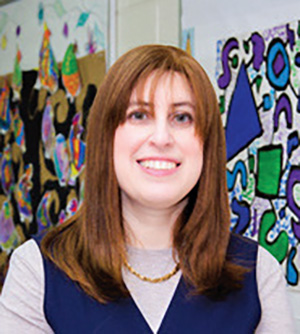
During this past week, I observed these scenarios unfurling in classrooms across RPRY. All represented opportunities for students to explicitly connect symbols with objects or ideas, mediated by supportive teachers.
A 2-year-old holds a block to her ear, talking on the phone to her friend. Another boy’s block is a shark swimming through the ocean.
“What says /k/? C says /k/, k says /k/, ck says /k/,” says a first-grade student. Another first grader pretends to take a picture of a sight word with his brain. He rehearses the spelling aloud, then covers the word and sky-writes the word.
“So a fraction is another way to express division. They are really the same thing,” exclaims a seventh grader, with awe in her voice.
An eighth grade students says, “A passive voice implies something different from an active voice. The author changes the feel when the sentence structure changes.”
Never underestimate the potency of a symbol! Fundamentally, a high-quality elementary-school education is encapsulated by symbolism because understanding symbols is ultimately the bedrock of all learning. The simple definition of a symbol, a thing that stands for something else, embodies every level of learning at school, beginning in early childhood and continuing through every grade. The ability to grasp that some material object or particular line drawing represents an abstract idea or relates to the real world in a concrete way, and the resultant patterns, is the crux of cognition.
Let’s examine several examples of how this is true. Although symbolic thought can be seen in babies as young as 8 months, we typically see symbolic play emerge between 11 and 12 months. Certainly by 18 months, children will use a block as a car or eat imaginary food from an empty toy plate. In young children, symbolic play is closely correlated with language development. In an essential way, this makes sense, as spoken language development indicates that a child realizes that a vocal signal produced with motor movements represents an internal meaning he/she desires to share that is related to the real world. As children increase their language sophistication, they must explicitly make the connection that words represent objects or ideas in the real world. They must understand that language is a tool to represent thought and to share needs, ideas and feelings. (There was a fascinating study done in Israel that explores this language and symbolic play connection in young children. Anyone interested in further exploration can read the article in “Infant Behavior and Development” February 2015, Volume 38, “Symbolic Play and Language Development.”)
Requisite elementary reading and math rely on a similar trajectory. Reading written language requires this key transition. Children must grasp that certain two-dimensional shapes, where directionality counts, stand for sound patterns. In real life, no matter in what direction I hold a pencil, it is still a pencil. However, with letter symbols, a change in direction may change a sound from b to d. Strings of these symbols represent words and the same pattern will always represent the same word; m-a-n will always spell man. The direction of the pattern matters as well—man is not the same as nam. A similar symbol correspondence must develop with numbers as well. Young children must grasp that the symbol ‘3’ stands for a quantity of three real-world objects. On a more sophisticated level, though, they must understand that ‘3’ also represents a relationship—that three books, three pencils and three toys all are three real objects even though the objects themselves are different. These foundational cognitive developments from early childhood through grade two are the cornerstone of all continued learning in school. Crucial to this exponential growth is layering students’ self-awareness, monitoring, planning and reflection into their intellectual growth, as encapsulated in the term metacognition.
As students progress through the grades, symbolism and symbolic thought continue to be crucial for successful growth. If a child sees someone crying, he/she mediates meaning through the thought process that crying may mean someone is sad, and may take action by going over to that peer to inquire. A child may need to read text about a “dark and stormy night” and need to infer that the mood is ominous. Often, an invisible that needs to be made visible to children is that so much of the world of language and gesture that we navigate is full of symbolism and implications that must be inferred. Across all curricular areas, symbolism is embedded both at the foundational level and layered into critical analyses.
In a broader sense, the messages that parents and teachers send by our actions are symbolic as well. Children know when their parents sacrifice to send them to yeshiva day school—that sends a powerful message of commitment to Torah. Symbolism underpins a strong Jewish education. Judaism is replete with symbolic rituals and traditions, from apples dipped in honey to wearing costumes on Purim. We believe that our mitzvot and deeds permeate our inner core and that our deep values are manifested in our thoughts and actions. When parents and school partner together to educate the next generation of Jewish children, there is strength in the symbolism.
By Chana Luchins
Chana Luchins is the assistant principal of general studies at Rabbi Pesach Raymon Yeshiva. If interested in continuing the conversation, please email her at cluchins@rpry.org.










